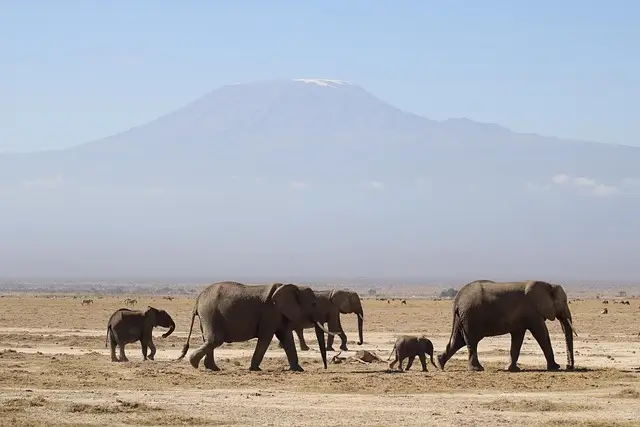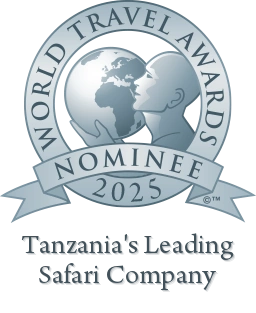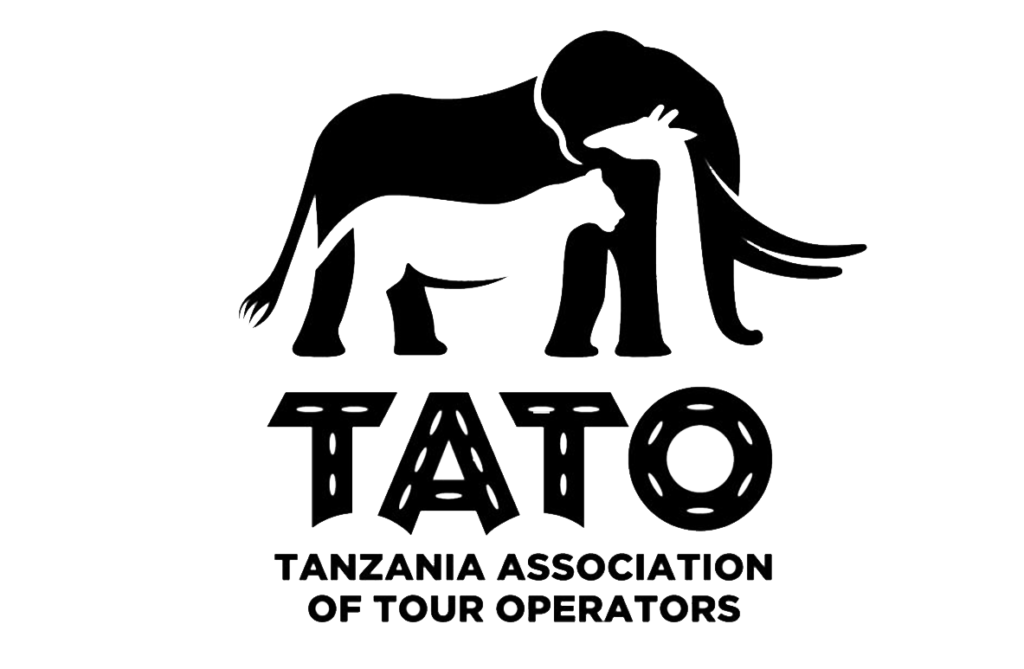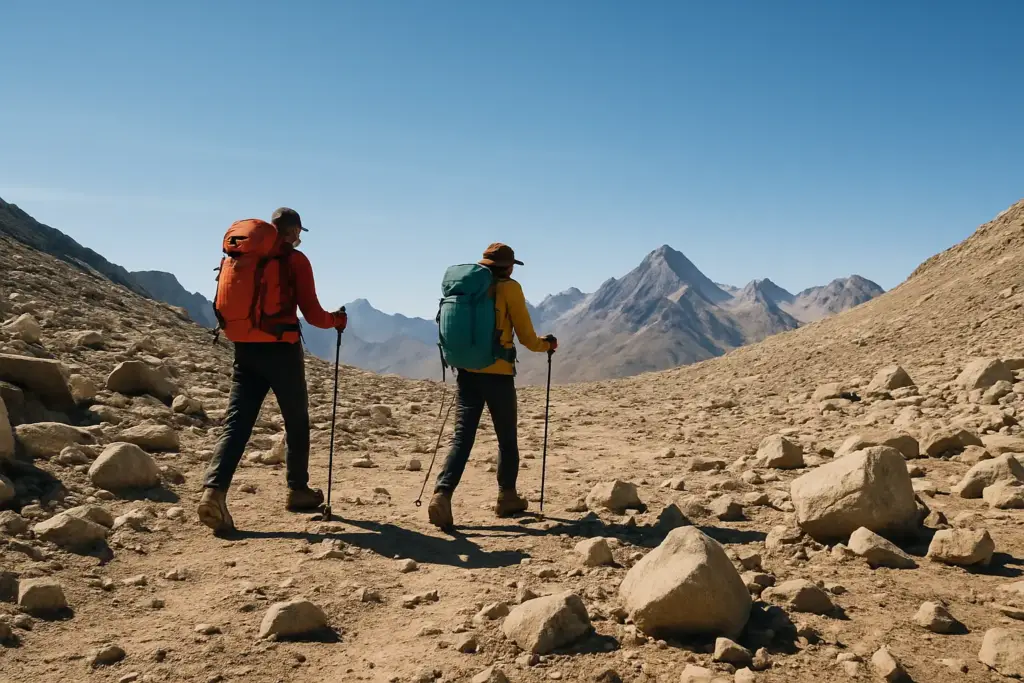Mount Kilimanjaro Climb Packages 2025/2026
Climbing Mount Kilimanjaro is a high-altitude trek to the summit of Africa’s tallest mountain in Tanzania. The climb takes 5–9 days, depending on the chosen route. No technical mountaineering skills are required, but altitude makes the trek challenging. Preparation, acclimatization, and guided support are essential for a safe and successful climb.

At-a-Glance
Duration: 5–9 days
Best months: Jan–Mar, Jun–Oct
Key tip: Choose longer routes for higher success.
Popular Packages
7–8 day Lemoshoration:
Best balance of acclimatization and scenery.
Climbing Mount Kilimanjaro is an adventure like no other. Standing 5,895 meters (19,341 feet) tall, it is the highest free-standing mountain on Earth and proudly known as the “Roof of Africa.” Its towering presence attracts thousands of trekkers each year who dream of reaching its iconic summit.
This guide was designed to help travelers prepare for their once-in-a-lifetime Kilimanjaro journey. It covers essential details such as success rates, routes, costs, acclimatization, safety, and packing. With insights drawn from years of guiding experience, it provides practical advice so every climber can feel ready for Africa’s greatest trekking challenge.
How Hard Is It to Climb Mount Kilimanjaro?
How long does it take to climb Kilimanjaro on average?
Most routes take 5-9 days depending on the path chosen. Marangu is shortest at 5-6 days, while Northern Circuit takes 8-9 days. Longer routes significantly improve summit success rates through better acclimatization. Budget extra days for potential weather delays or rest days if needed.
| Route | Duration | Success Rate |
|---|---|---|
| Marangu | 5–6 days | ~50% |
| Machame | 6–7 days | ~75% |
| Lemosho | 7–8 days | ~85% |
| Rongai | 6–7 days | ~70% |
| Northern Circuit | 8–9 days | ~90% |
When is the best season or time of year to climb Kilimanjaro?
January-March and June-October offer the best conditions with clear skies and minimal rainfall. Avoid April-May (long rains) and November (short rains). December can work but expect occasional showers. Dry seasons provide better visibility and more comfortable trekking conditions. Here is the Detailed Guide About Best time to climb Mount Kilimanjaro
- January–March: Quieter trails with cooler temperatures and a higher chance of snow at the summit — perfect for climbers seeking fewer crowds and a more peaceful trek.
- June–October: Peak climbing season with sunny days, clear views, and excellent photo opportunities. Trails are busier, but acclimatization and summit success are generally higher.
- Rainy months (April–May and November) bring slippery paths, cloudy skies, and muddy campsites, making climbs more difficult. However, these off-season months appeal to those looking for solitude and fewer climbers on the mountain.


How Much Does It Cost to Climb Mount Kilimanjaro?
Expect $2,000-$4,000 per person for a quality 6-8 day trek, including guides, porters, meals, and park fees. Budget operators start around $1,500 but may compromise on safety and service. Premium operators charge $4,000+ for luxury experiences with better equipment and smaller groups. Read More About Kilimanjaro climbing Cost.
What should I pack for a Kilimanjaro climb?
Essential Packing List items include insulated sleeping bag, waterproof jacket/pants, warm layers, hiking boots, headlamp, sunglasses, and high SPF sunscreen. Pack light but don’t compromise on warmth. Most operators provide detailed packing lists. Rent heavy gear locally to save luggage space and costs.
Packing List
What are the best routes to climb Kilimanjaro?
Routes
Days on the Mountain
Price
- {{service.name}}
- {{itinerary}}
No result found!
Filter treks
Routes
Days on the Mountain
Price

Expert Opnion by George, a seasoned Mountain climbing expert at Kilidove.
“The key to a successful Mount Kilimanjaro hike or climbing trip is preparation. Ensure you’re physically ready by training your endurance and strength, especially focusing on your legs and core. Proper gear is crucial—invest in high-quality hiking boots, weather-appropriate clothing, and a good backpack. Stay hydrated and pace yourself; it’s not about speed but about steady progress. We will always provide you with a guide who knows the terrain during the hike and can help you navigate safely. And remember, don’t rush the climb—enjoy the journey and the beautiful landscapes around you.”
How Do You Acclimatize Safely on Kilimanjaro?
Is Climbing Mount Kilimanjaro Safe?
What Is Life Like on the Mountain?
Life on Kilimanjaro follows a steady routine of trekking, meals, and rest. Climbers wake early, hike 5–7 hours daily, and camp in tents, except on the Marangu route where huts are provided. Meals are hot and energy-rich, prepared by mountain cooks.
How Much Should You Tip on Kilimanjaro?




Why Choose Kilidove Tours for Climbing Mount Kilimanjaro?
Frequently Asked Questions About Climbing Kilimanjaro
Good cardiovascular fitness is essential. You should comfortably hike 6-8 hours daily with a daypack. Start training 3-4 months prior with regular hiking, cardio exercises, and leg strengthening. No technical climbing experience required, but endurance and mental toughness are crucial for summit success.
Choose longer routes (7+ days) for better acclimatization. Train consistently for 3-4 months beforehand. Stay hydrated, eat regularly, and maintain a steady pace. Listen to your guide's advice. Mental preparation is crucial—expect discomfort but stay focused on your goal throughout the challenging summit night.
Beginners can successfully climb Kilimanjaro with proper preparation. No technical mountaineering skills required, but hiking experience helps. Focus on building endurance through regular walking and hiking. Choose reputable operators with experienced guides who prioritize safety and provide excellent support throughout your journey.
Minimum age is 10 years with parental consent and guide approval. No official upper age limit exists—climbers in their 70s and 80s have succeeded. Physical fitness and health matter more than age. Consult your doctor before booking, regardless of age, especially if you have pre-existing medical conditions.
Watch for headaches, nausea, dizziness, fatigue, and loss of appetite—these are normal mild symptoms. Serious signs include severe headaches, vomiting, confusion, difficulty walking, or breathing problems. Descend immediately if severe symptoms occur. Proper acclimatization and hydration help prevent most altitude-related issues.
Licensed guides and porters are mandatory on all Kilimanjaro routes. Reputable operators provide experienced guides, assistant guides, and sufficient porters to carry group equipment and personal bags. This support system is essential for safety and success—never attempt Kilimanjaro without proper local guide services.
Weather varies dramatically by altitude. Base starts tropical and warm, while summit can be -20°F (-29°C). Expect rain forests, alpine deserts, and arctic conditions. Temperatures drop 3°F per 1,000ft elevation gained. Pack layers for all conditions—from shorts to heavy winter gear for summit night.
No technical climbing equipment needed. Kilimanjaro is a non-technical trek requiring only good hiking boots, trekking poles, and warm clothing. Crampons or microspikes may help on icy summit sections but aren't essential. Focus on proper layering systems and comfortable, broken-in hiking boots instead.
Most routes use camping with provided tents, except Marangu which offers basic mountain huts. Operators supply dining tents, toilet tents, and sleeping tents. You'll need your own sleeping bag and pad. Porters set up/break down camps daily, so you focus on trekking and acclimatization.
Operators provide all meals—typically 3,000-4,000 calories daily including breakfast, lunch, dinner, and snacks. Bring personal energy bars, nuts, and favorite snacks for extra calories and morale. Appetite decreases with altitude, so familiar comfort foods help maintain energy levels during challenging summit push.
Start cardio training 3-4 months prior with hiking, running, or cycling. Practice hiking with a weighted pack. Build mental resilience through meditation or visualization. Research the route and set realistic expectations. Mental preparation is crucial—expect discomfort but focus on the incredible achievement awaiting you.
Yellow fever vaccination required if arriving from endemic areas. Consider hepatitis A/B, typhoid, and meningitis vaccines. Malaria prophylaxis recommended for safari combinations. Consult a travel medicine specialist 4-6 weeks before departure. Comprehensive travel insurance including high-altitude evacuation coverage is essential for peace of mind.
Licensed guides carry first aid equipment and emergency oxygen. Most operators have emergency evacuation procedures and communication devices. Guides monitor climbers' health through pulse oximeters and symptom checks. Choose operators with strong safety records, proper insurance, and experience handling altitude-related emergencies for maximum protection.
Follow "climb high, sleep low" principle when possible. Choose longer routes for gradual altitude gain. Stay hydrated and maintain steady, comfortable pace. Listen to your body and communicate symptoms to guides. Take prescribed altitude medication if recommended. Proper acclimatization is the key to summit success and safety.
- Kilidove Tours Ranked #1 on TripAdvisor
EXCELLENTVerified A life-time experience We were on a family trip to Tansania and through a recommendation for a Safari operator we got in contact with Kilidove. And what can I say: Right from the moment Sam, our guide for the first week, picked us up at Kilimanjaro Airport, we were complety immersed. And yes, we were tourists, but never really feeled like, but more as guests, with Sam beeing the perfect host - a true lover of the animals and nature, an excellent driver and very attentive and open to share his experiences.Posted onVerified Incredible people! Trip of a lifetime! Kilidove is incredible!! We did the 6 day machame route on Kilimanjaro followed by a 4 day safari followed by 4 days in Zanzibar. The accommodations were amazing, the people were even better and we are both vegan and gluten free and they were able to accommodate (even on the mountain while camping). I cannot say enough good things about this company!! For the trek up Kili our chief guide was Colman and he was so kind, funny, and caring. Because of him we both had a successful and pleasurable experience summiting. He is an excellent guide! For our safari we had Jackson and we saw the big 5 plus every other animal you could think of. He was an excellent safari guide. We had one small hiccup on the trip in Zanzibar with a city tour that got cut a bit short. Notified the company and they were extremely apologetic, comped our dinner for the next 3 nights (which was completely unnecessary but much appreciated) and given a new tour guide for the next day. The trip then ran flawlessly. They most definitely made it right! They are amazing. I recommend kilidove to anyone and everyone for all your Africa adventures!!Posted onVerified Best safari tour ever! We booked our honey moon with Kilidove and it was the best experience ever!We were super lucky to get Bony as our guide and he couldn’t have been better!!The overall experience was great, they care about sustainability and our guide was super respectful to wilde life!! 10/10 experience.Everything was well organized (transport, hotels, foods, itinerary) we didn’t have to worry about anything… only enjoying!Posted onVerified Perfect job, and very trustful company to climb Kilimanjaro in a 6 people group Activity: climbing Kilimanjaro.We climbed Kilimanjaro in 7 days by the Machame road.Group of 6 people, with 3 guides 1 chef, 1 waiter and 18 porters (3/pax), which is the norm. Everything went well and we succeeded in our quest to the summit. The guides and all the Tanzanian people with us have been amazing, helpful, and nice ... Considering the lack of comfort and the difficulty of the ascension, we consider that they did a perfect job with the cooperation and the advice. Asante for everything you made for us, to make the dream coming true!!Posted onVerified Mr. Bonny at Kilidove is Amazing! We had Mr. Bonny from Kilidove pick us up from our Arusha hotel and serve as a private guide for 3 nights in the Seregenti, and our return trip back to Arusha. Mr. Bonny was an incredible guide! He was so knowledgable about all the animals and everything we saw on our safari. It was clear how much he loved the animals and at home he was in the Serengeti, having grown up right outside the park. He was able to spot animals so far in the distance, and find the elusive leopard in the tree that no one else could find. Mr. Bonny was engaging, kind and an absolute pleasure to spend time with. It truly was sad to say goodbye to him. I have to also note that Mr. Bonny was a very safe driver. When driving to/from Arusha, we were stunned by the number of safari vehicles speeding by us on the unsafe and rocky dirt roads. Driving in Tanzania is not for the faint of heart, as we witnessed a few accidents, including some cows being hit by a public bus. We were so grateful to him and would highly recommend!Posted onVerified Best safari experience! We spent our honeymoon in Tanzania for a 9 day safari trip in Tarangire, Lake Manyara, Serengeti and Ngorongoro national parks and it probably was the most incredible experience we had so far. The booking process was really comfortable and easy, Lisa answered all of our questions quickly and made the safari fit to all our wishes (not leaving the set budget out of mind).We especially want to thank our guide, Sam, for the amazing trip that was mostly his merit. He went above and beyond to ensure we got the most out of our trip. He had a profunde knowledge of all the locations and the wildlife and knew where the best spots for watching wildlife were. No wishes remained unfulfilled. Besides that, Sam was incredibly nice and a great (and hilarious) company during the long car rides. Everybody getting to do a safari trip with him can call themselves lucky!Thank you so much to the whole team, asante sana!Posted onVerified Superb in every way. Highly recommended and without hesitation! Choose Kilidove for the experience of a lifetime! We contacted Kilidove after an online search to find a company that could plan a month-long itinerary including Rwanda, Uganda, Kenya and Tanzania ending in Zanzibar to celebrate my 60th birthday. We received back a professionally presented proposal which we were delighted to find was a privately guided tour. Our only essential requirement was to see the mountain gorillas in Rwanda, but the proposal was comprehensive and varied including safaris as well as cultural experiences. We had to book our own international flights, apply for necessary visas and get certain vaccinations ourselves, but everything else was taken care of without a single hiccup. We stayed in a variety of accommodations from 5-star hotels and lodges to tented camps and they all enhanced our adventure in different ways. The main guides and drivers, Duncan, George and Boni were all professional, dedicated and enthusiastic. Our stand out experiences were obviously meeting the gorillas high up in the mountain in Rwanda, seeing the elusive leopard up a tree in Kenya, spending 90 minutes alone with a lion family complete with four cubs by a water hole in the Serengeti and two hours hunting with the Hadzabe tribe in Tanzania. There were many more, the cheetahs close up in the Maasai Mara and the hot air balloon ride, the many different bird species including huge flocks of flamingos and pelicans, the Karen Blixen Museum in Nairobi, the Genocide Memorial in Kigali, the cycling tour of Mto Wa Mbu, I could write a book! It was a very active holiday so it was nice to just chill out in Zanzibar for five days at the end. Everything was organised by the incredible Lisa Adams who was there to help with any questions via WhatsApp or email throughout the planning process and after we had arrived in East Africa. We were told there are 300+ safari companies in Arusha where she is based and for sure, without hesitation, we would highly recommend Kilidove to anyone. They were superb in every way. As well as that I have now clocked up my 87th country worldwide and my 13th African country. Thank you Kilidove for everything!Posted onVerified A memorable outstanding safari to Kenya and Tanzania , Hakuna Matata We just came back from a wonderful , well planned and organized safari to Kenya and Tanzania for 12 days and with an additional 5 days in Zanzibar from October 6th to October 23rd 2023. We really want to thank Lisa Adams who helped us plan and coordinate this memorable, private safari and leisure time in these countries. We had marvelous, respectful , reliable and so knowledgeable guides and drivers. First, Kelvin Vinkar from Dove Africa, the sister company in Kenya, was on time at the airport and despite the fact that we missed our connection with Qatar airlines, everything turned out quite well with the airlines personnel and we were on time for our schedule to go to our first park Amboseli and to Kibo safari lodge for two nignts. Perfect, we had game drives on both days that were unbelievable with the Kilimandjaro that was so clear. We were able to see so many species of animals such as girafes, elephants, zebras, Thomson's gazelles ,antilopes, impalas, waterbucks, cheetahs and lions with all their beauty and living environment. The Kibo lodge was very comfortable with beautiful views of the Kilimanjaro. We continued our itinary to lake Nakuru, 9 hours of driving and stopping at the incredible Great Rift valley. We were so happy to visit the park as we saw 2 rhinoceros, mother and baby , we were at our 4 th big 5 already . We were a bit late to arrive at the Ziwa Bush Lodge that seemed to be very nice, so quiet and peaceful, the staff accomodated us so nicely for one night, The next morning we left for the Maassai Mara reserve and Olengoti eco lodge at Narok at the Talek river . What a reception on arrival we got by all the staff, an incredible 2 days , having breakfast and dinner with the hippopotams and crocrodiles and beautiful and memorable game drive to the awesome Maassai Mara reserve , The plains are so beautiful and the animals are incredible. We were able to visit a Maassai village near the camp, memorable time with these beautiful people and children. We learned so much of their culture and habits. Kelvin with his calm and patience drove us safely for 5 hours through massai mara reserve to the border of Tanzania. We didn't have trouble to pass the border and customs and Bonnie , Boniphace Sospiter our incredible guide for Tanzania was already waiting for us for the take over. We were heading to the Serengeti park north side to Gnu migration camp. We were the only visitors , what a service we had . With a little of rain but a real blessing as David said. Marvelous meals and attention from the staff, We already start with a game drive that was so wonderful in Serengeti parks with all the beautiful Gnus and Zebras and the next morning a leopard our 5th big five that was missing so far, Bonnie was so knowledgeable, sensitive , very helpful and very accomodating to all our needs and ensure we see animals in all their behaviors of calm or hunting. He ensure in every camp that we always had our lunch to all game drives on long days. We loved so much all the Mawe lodges that we visit along our itinary in Serengeti and Norongoro crater, Karatu and Tarangire national parks. All the teams and personel of the Mawe lodges are so welcoming, so nice and so handsome . We loved everyone we met. Bonnie drove us to the airport after 7 days of intense safari games but so memorable in the savanah . We flew for internal flight to Zanzibar with flight link and other driver Luqman was waiting for us, and drove us to Tembo hotel, in Stonetown, so beautiful and confortable on the beach with a wonderful view of the port. The next morning we were able to have a visit of stone town that was very interesting to learn the history and culture, the big market. We could visit the Freddy Mercury museum. After we left for Pongwe beach hotel for 4 days that concluded in peace and rest at the marvelous beach and resort with excellent cuisine. We will always remember this wonderful trip of East Africa and Zanzibar and we are so happy to have chosen Kilidove safari and tours for planning the trip as everything went so well , so safely and so well organized and the choices of the lodge or camp were so confortable and we ate everywhere so well with an outstanding service with amazing staff. Thank you to every one we met in this incredible journey and you will always remain in our hearts. Hakuna Matata. Louise and Serge from Montréal, Québec, Canada.Posted onVerified "Bucket List Brilliance" We 6 Seasoned Safari Enthusiasts were blown away by The Serengeti Experience. The best decision was adopting Kilidove Tours to hang it all together. Lisa, your Admin. Management was perfect. (even to the extent of organizing a Birthday Party Cake in the Bush). Then there was our Driver/Guide and Friend Bonny, You are simply "The Best".Asante-sana. Derek Fay (Cape Town).Posted onVerified 5 Stars isn't high enough for Kilidove Tours My husband and I have recently returned from a 15-day private adventure designed and carried out by Kilidove Tours and Safaris. From start to finish this trip was planned and executed flawlessly thanks to the amazing team at Kilidove. On a scale from one to ten, they deserve a fifteen! I could write pages about our experience, but I will try to hit the highlights. From the first contact a year before our trip, Lisa Adams (Kilidove’s operations manager) responded to every question in a series of emails ranging from possible itineraries to vehicle maintenance. The result was the perfect trip that addressed every wish and concern on our list- safari start day in case of travel delays, safari locations, cultural experiences, snorkeling, and a beach retreat. Our safari guide mentioned several times how impressed he was with our personalized itinerary.Eleven months passed between the date we booked our trip and our departure for Tanzania. During that time whenever a question came up, I would send an email off to Kilidove and Lisa would respond immediately. We received guidance on packing lists, luggage limits, visa requirements, and availability of health services. All this information allowed us to be well prepared for our Tanzanian adventure.Once in Tanzania, each person we encountered did everything they could to make us feel at home and worked tirelessly to ensure we had the best experience possible. All the accommodations were clean and comfortable ranging from the Mawe tent lodges to the Zanzibar beach resort. Meals were tailored to an American/European pallet and the greatest care was taken to provide safe water and food in order to prevent any illness. Our drivers and safari guide were the most amazing people. The range of skills they possessed took us by surprise. They are professional drivers, multi-linguists, cultural ambassadors, and wildlife experts. Each one asked us what our wishes and desires were for our trip and work tirelessly to make sure we didn’t leave Tanzania disappointed. Above all they were warm and friendly people with whom we shared many laughs and special experiences. We are forever grateful to Johnson our Arusha guide, Luqman our Zanzibar guide, Habib our Stone Town guide and most importantly Samson our safari guide who showed us more of Tanzania then we could ever have imagined. Thank you all for your hospitality and kindness.Finally, I want to thank Lisa and everyone on the Kilidove team that made our dream vacation a reality. I know during our fifteen-day adventure she kept tabs on us, either through direct contact with me or one of our guides. She was always one step ahead of us making sure that transitions from one part of the trip to the next ran smoothly. I hope that I can return to Tanzania one day and I look forward to that time when we can work together once again.

